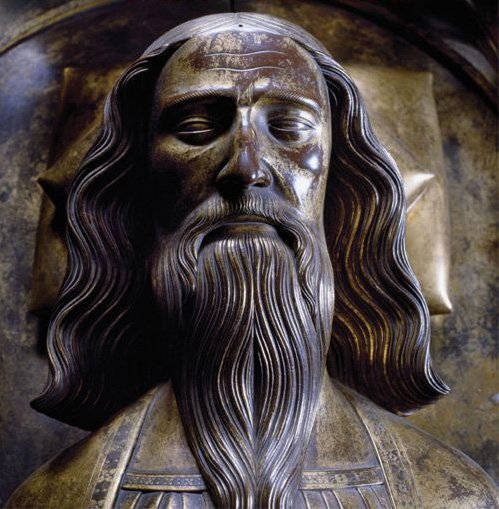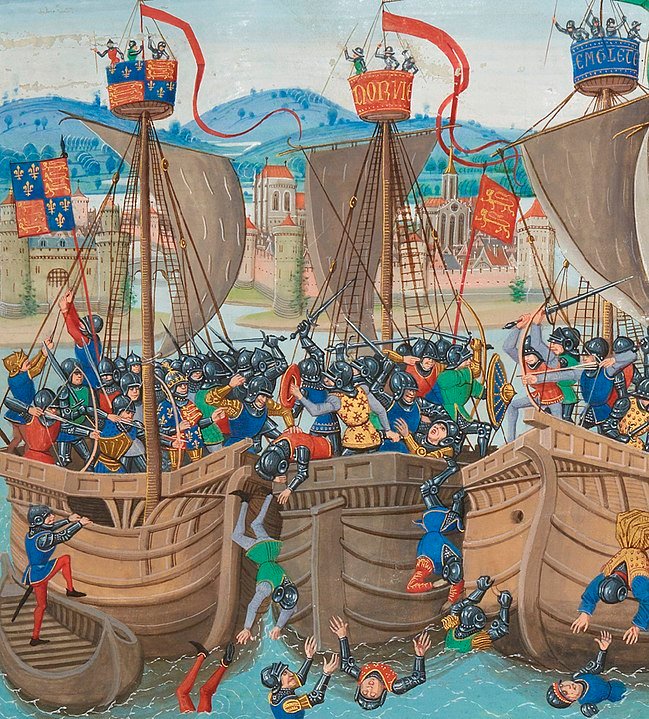Edward III
Act 3 sc 1
Flanders. The French camp
Here flew a head dissevered from the trunk
There mangled arms and legs were tossed aloft
As when a whirlwind takes the summer dust
And scatters it in middle of the air.
-Mariner
Fields near Sluis, The Netherlands
Background - “What is past is prologue”
EDWARD III
 This play is the most recent to be added to the list of works by Shakespeare.
This play is the most recent to be added to the list of works by Shakespeare.
Published anonymously in 1596 it was first suggested the play was by him in the 18th century.
Today it is generally accepted that some of it, at least, is his work, and it has been performed by the Royal Shakespeare Company as such. It has also been published by Cambridge University Press, as well as the Arden series of Shakespeare’s plays and the Oxford series.
It tells the story of Edward’s great victories in France during the early stages of the Hundred Years War. A period of nine years between1337 and 1356 compressed into a matter of weeks.
And while there may still be some debate as to whether it should have been elevated from the Apocrypha, others such as Pericles, Prince of Tyre and Two Noble Kinsmen are now widely accepted as being written, at least in part, by Shakepeare.
On the Stage - “The play’s the thing…”
3:1 FLANDERS THE FRENCH CAMP

The Battle of Sluys. Jean Froissart (1327 – 1405)
In this scene King John of France is with his sons, Philip and Charles, awaiting the arrival of the English fleet at Sluis.
They’re reassured by the support of the Danes, Polonians, the Kings of Bohemia and Sicily.
The Bohemian King and a Polonian Captain arrive and they are all discussing the coming battle when a Mariner arrives with news that the English fleet is in sight and that their flag already combines the colours of France with the English.
John sends the mariner off with instructions to return when the fight is done – if he is still alive.
He then sends the various armies off to positions along the coast in case the English manage to land.
Shots are heard (the first of the Hundred years War, in fact) and before long the Mariner returns with a gruesome description of the battle which the French have lost.
John calls for all his forces to gather to fight the English before they get too far into France.
On the Map - “Presume not that I am the thing I was”
SLUIS, THE NETHERLANDS
This scene focuses on the Battle of Sluys (now Sluis) which was fought at the inlet between West Flanders and Zeeland (Sluis and Blankenberge) on the 24th of June 1340.

Approximate scene of the Battle of Sluys
Today there is nothing to indicate the horrendous violence of what was the English Navy’s first engagement.
Sluis was a port bringing in goods for the markets of Bruges in the 14th century but is now landlocked although it is still a busy shopping town.
And, as the site of the battle is also landlocked, it is possible to go for a walk on it.
After a bit of research it was possible to locate the approximate scene of the bloody sea battle.
The landscape, reclaimed from the sea, is one of broad open fields of dark brown soil broken up occasionally by streams and hedges.
There is nothing to indicate what happened on that June day in 1340 although there is a memorial to a scene from another war six hundred years later.
Sergeant JL Hickman of the Royal Canadian Engineer Regiment was killed nearby at the village of Retranchement putting up a Bailey bridge with his comrades during the allied advance on the 31st October 1944.
A permanent bridge now stands at the same site and has been named in his memory.
Retranchement is named after defences built there as protection against Spanish forces in the early 17th century when it was still accessible by sea.
Its landscape is no stranger to war.

